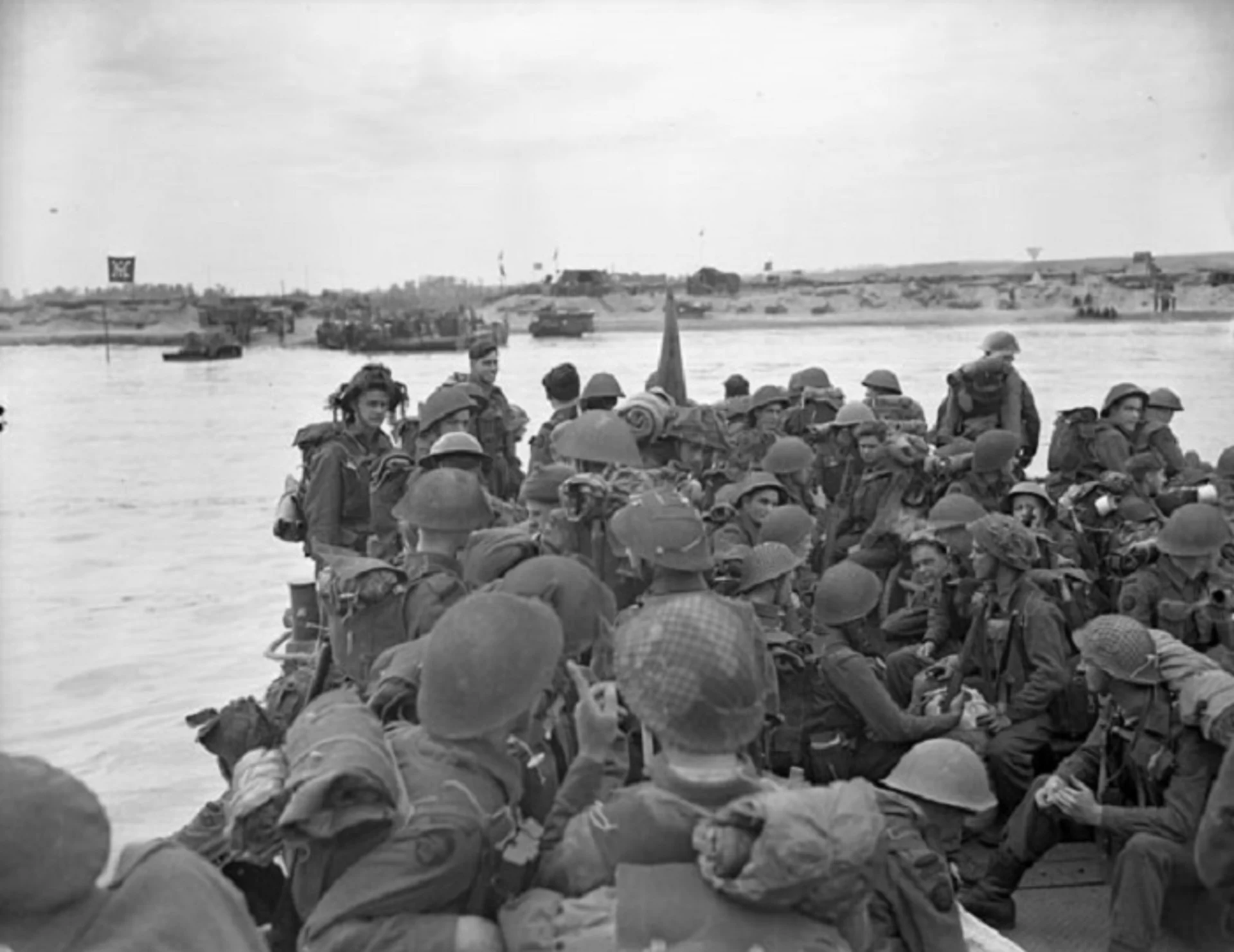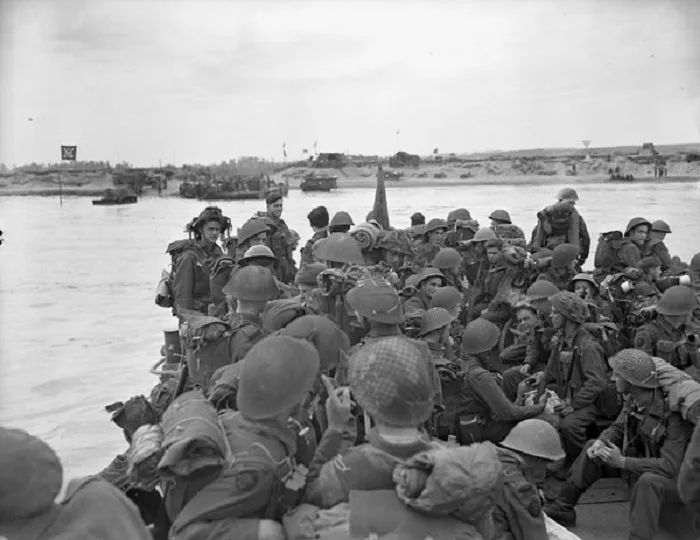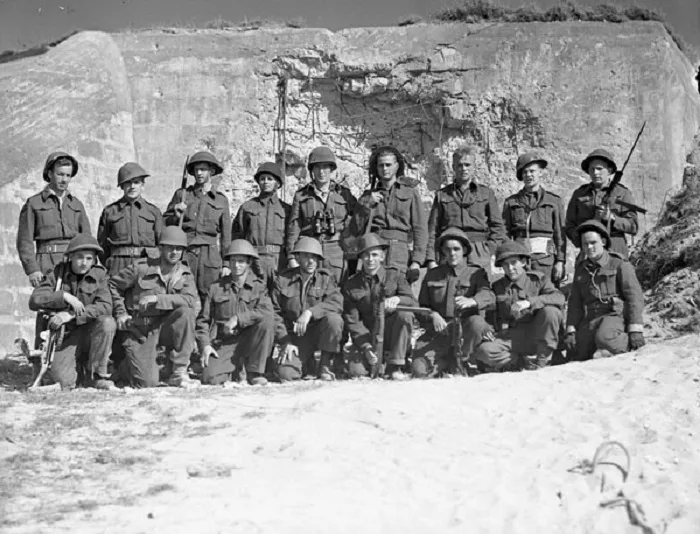
D-Day: How meteorologists helped win the war
A blown forecast could have turned the fateful Normandy Landings into a disaster.
Editor's note: This story was originally published in June 2014, and has been updated.
These days, if you bungle a forecast in June, you have to cancel a barbecue.
In June 1944, getting it wrong could have cost lives.
And the people making the call had almost none of the modern meteorological tools they’d need to back it up.
"No models, no satellites,” Weather Network meteorologist Dr. Doug Gillham says of the methods at the time. “It just came down to an understanding of how the atmosphere works, and using the limited data that they had."
That stormy June, D-Day, the date of the Normandy Landings, was looming. 150,000 Allied soldiers were ready to storm the five beachheads, including the men of the 3rd Canadian division, who were staring down their own destiny at Juno Beach.

Personnel of Royal Canadian Navy Beach Commando "W" landing on Mike Beach, Juno sector of the Normandy beachhead, France, 8 July 1944. July 8, 1944. Source: Library and Archives Canada
The invaders were backed up by tanks and materiel painstakingly assembled and prepped in the lead-up to the invasion, originally scheduled for June 5.
Problem: The weather was lousy, or was supposed to be.
General Dwight D. Eisenhower, the supreme commander of the Allied Forces in Europe, needed a highly specific set of circumstances to ensure the D-Day’s success. Quiet weather, moderate winds, low tide and a more-or-less full moon were crucial.
Eisenhower wasn’t just throwing darts. He was relying on his chief meteorologist, James Martin Stagg, a Scot with years of experience in reading the weather. And the news he had for Eisenhower was grim: June 5 would be a disaster, weather-wise.
The invaders would face strong winds, whipping the surf up enough to possibly swamp landing craft. Cloud cover would be too low to allow launching of paratroopers, not to mention bombing runs to soften coastal defences. Offshore vessels would have had a hard time making precise shots for their own bombardment of the beaches, according to historian William Brian Quill, whose write-up of the meteorological background is worth reading.

Canadian Soldiers Disembark at Juno Beach. Source: Library and Archives Canada/Wikimedia Commons.
Eisenhower postponed the invasion. The massive force would wait at least one more night, and Stagg went back to the drawing board.
Although a meteorologist himself, Stagg didn’t shoulder the burden of the actual forecasting. Instead, he relied on three separate two-member teams, two British and one American. They worked independently but had regular consultations (and, if the sources are to be believed, full-scale arguments) over scrambled phone lines, with Stagg taking the balance of their predictions. It was they who told him June 5 was no good.
Gillham says rather than relying on complicated high-tech tools, the forecasters of the time had to extrapolate from current, observed conditions.
"It was just nuts and bolts forecasting, using the weather to figure out what the weather would be,” he says.

Personnel of W-2 Party, Royal Canadian Navy Beach Commando "W" outside a German fortification in the Juno sector of the Normandy beachhead, France, 20 July 1944. July 20, 1944. Source: Library and Archives Canada.
Luckily for the forecasters, by 1944, they had the benefit of a large network of weather stations. Aside from the ones in the U.K. itself, British ships were scattered all across the North Atlantic, sending data back. Aerial missions recorded conditions as well, another source of data.
This source even says the Germans helped, without meaning to: Allied forces had cracked the code used by U-Boats to communicate with headquarters, so their weather reports were immediately intercepted by the Allies.
Long range forecasting was still near-impossible, but the readings from afar helped forecasters observe what was happening, and determine how it would impact the weather as a system approached home.
"It really speaks to looking at the data, and understanding how meteorology works,” Gillham says. “You can project how things will change based on that data."
The weather on the night of June 4 into June 5 turned out to be worse than expected, according to this look-back by the International Commission on the History of Meteorology.
Time was running out. The next time the conditions would be favourable for an assault would be later in the month, beyond the reasonable reach of forecasters’ prediction skills.
Stagg turned to his three teams, and the usual arguments began over what June 6 was to be like.
One forecaster on the British teams was Sverre Petterssen. If that doesn’t sound like a very British name, it’s because he was on loan from Norway. His home country was conquered by Nazi Germany earlier in the war, so you might say he had a bit of an axe to grind. According to this writer, his meteorological pedigree was impeccable.
As one storm forced the postponement of the June 5 invasion, Petterssen had his eye on another.
He noticed one ship hundreds of kilometres west of Ireland was transmitting rising pressure readings, suggesting a brewing system in the north Atlantic was moving north, rather than toward the continent. At the least, that could mean a break in the weather, long enough for the invasion to go ahead.
The other British team wasn't convinced, but Petterssen’s team and the Americans voted to go ahead. Stagg got the message, telling Eisenhower June 6 was a go.
Apparently the Germans weren’t as diligent. They had their own team of meteorologists, and they had a good idea that something big was coming, but although they expected the same kind of rough weather as the Allies, they predicted, incorrectly, that the seas would be unacceptably rough for the invaders to risk it. Many officers were even on leave on June 6.
Not that it was a walk in the park. Allied bombardments and paratroop operations were stymied by unexpected cloudbanks, leaving the German coastal defences more or less intact. And the winds, though acceptable, were still lousy, whipping the waves as much as 2 m above normal.
Most landing craft made it through, but tanks and other materiel had a rougher time. At Juno, the Canadian forces had to race up the beaches in the face of machine gun fire, from defenders untouched by the ineffective bombardment.
Still, though 340 Canadians lost their lives, the Normandy Landings were a success, and the operation was the start of the Nazis’ downfall.
"It was still a very difficult crossing, but they were still able to find a window of opportunity,” Gillham says. "Weather changes history. This is a great example.”











